Fly Fishing: 3 Great Times to Fish Streamers
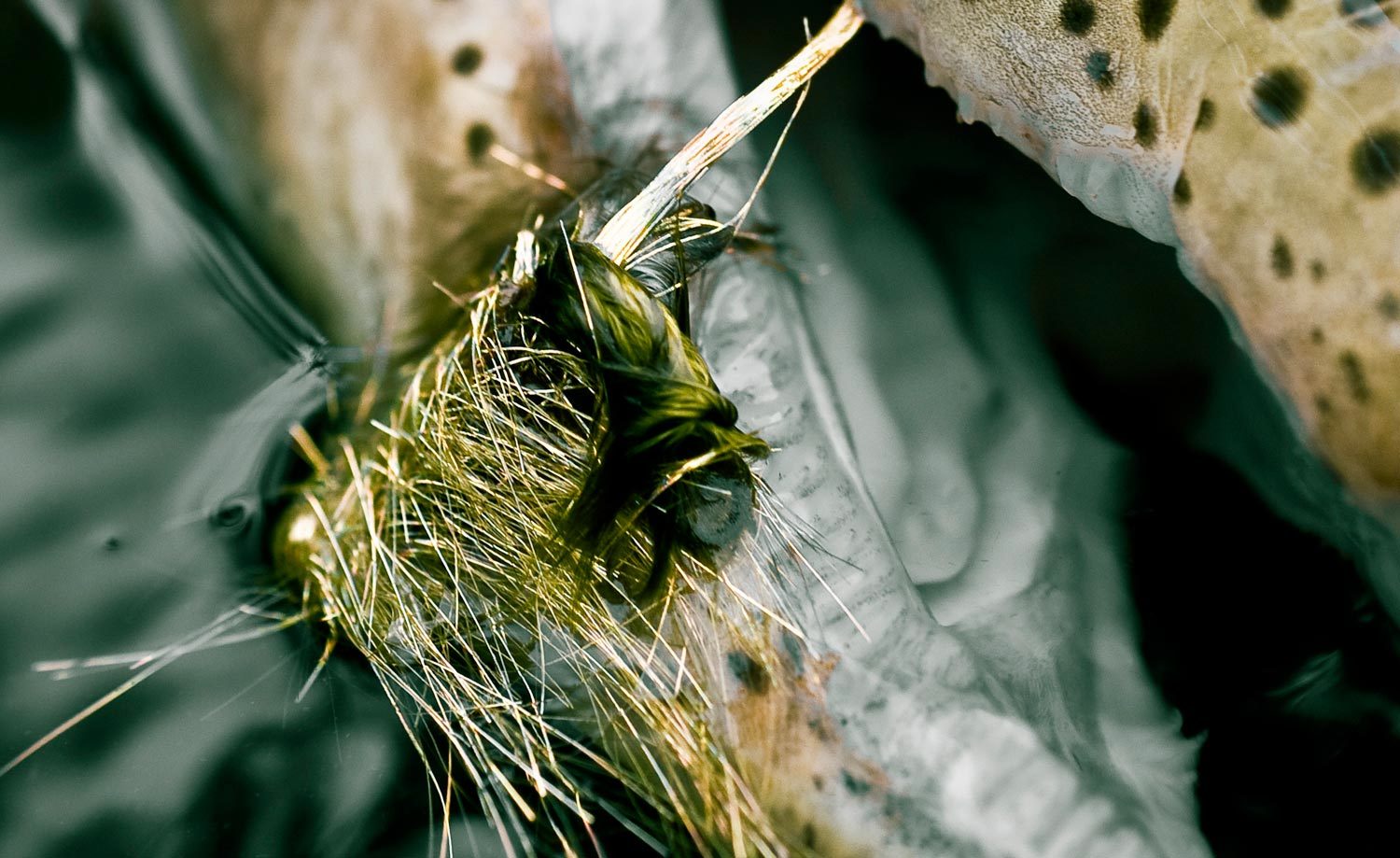
I fell in love with streamer fishing the very first time I cast one.
All it took was me bringing one trout to the net on a size 6 white Zonker, and I was hooked. I’ll never forget that beautiful 15″ wild rainbow trout, that I caught and released on a ten foot wide Southern Appalachian blue liner up in North Georgia back in the 90s. I remember the tiny stream being too overgrown and tight for me to make traditional fly casts so I crawled down on a flat boulder, stripped out some fly line and dead drifted the streamer downstream into a pool. Nothing happened at first but I didn’t give up. Instead of retrieving the fly all the way in, like most anglers regularly do, I instead made a few strips in and then let the streamer drift back down into the pool. On my third attempt, that gorgeous wild rainbow trout hammered my streamer and I brought it into my net. I still use that downstream stripping and drift back technique quite a bit when it’s called for. It works equally well with nymphs and dries.
Read More »Steelhead, Karma and the Art of Showing Up
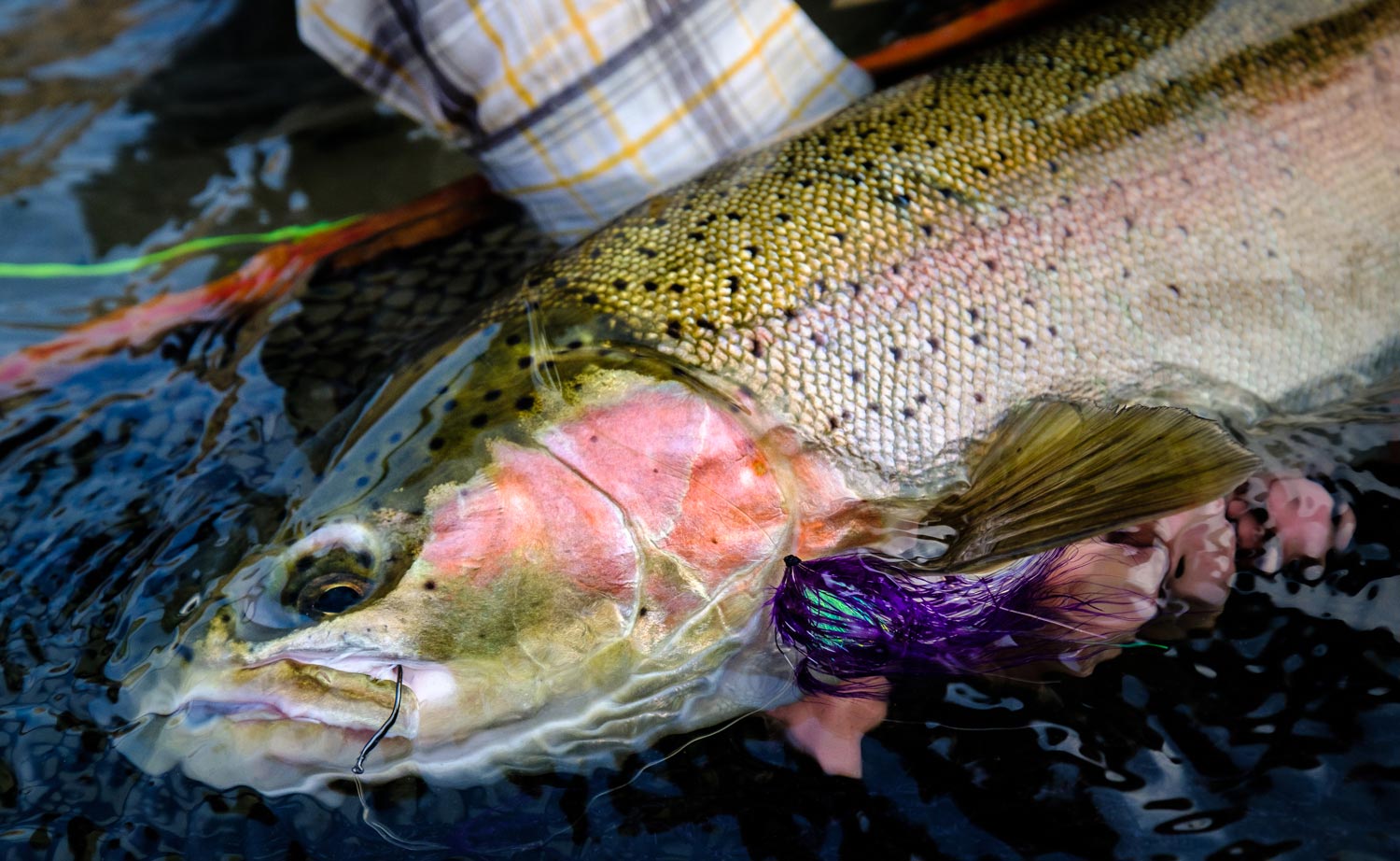
I know of no more mystifying fish than the steelhead.
Everything about anadromous steelhead is a mystery. An esoteric exercise in chaos theory beginning with an inexplicable choice to swim to the ocean and ending with an equally mystifying decision to eat a swung fly. The more we as anglers try to impose reason and method on these fish, the more they defy us. This fuels a sort of brain fever in the steelheader which, unchecked, can manifest itself in self loathing, delusions of grander, obsessive behavior, mysticism and other antisocial behaviors. There is an element of psychology to all fishing but none more than steelheading.
Swinging a fly for steelhead is wonderfully technical. The finesse, the attention to detail and the absolute focus required to do it right are staggering. And while all of the technique is absolutely essential to master and crucial to execute, it often has nothing to do with the catching of a fish. That’s where it gets really mind-bending. I’ve seen it time and again. Talented anglers making perfect casts and swings time after time to no avail, while another angler does everything wrong and is rewarded with a fish. I have personally been on both sides of that equation. It’s a real thing.
In the long run I am convinced that good technique prevails, but in the short run it can often seem random. In the end, there is nothing in steelheading more important than being in the presence of a fish who is ready to eat a fly. End of story. For those of us who believe we control our destinies, that’s a bitter pill to swallow. I firmly believe, however painful it is to hear, that the fish chooses us, not the other way around.
So what is the angler hoping to catch a steelhead on the swing to do?
The best thing I can tell you is, show up, stay positive and do the work. That’s what puts fish in the net. This year on the Deschutes Steelhead Camp I saw a classic example from my friend Mark Haffenreffer.
Read More »Let it ride
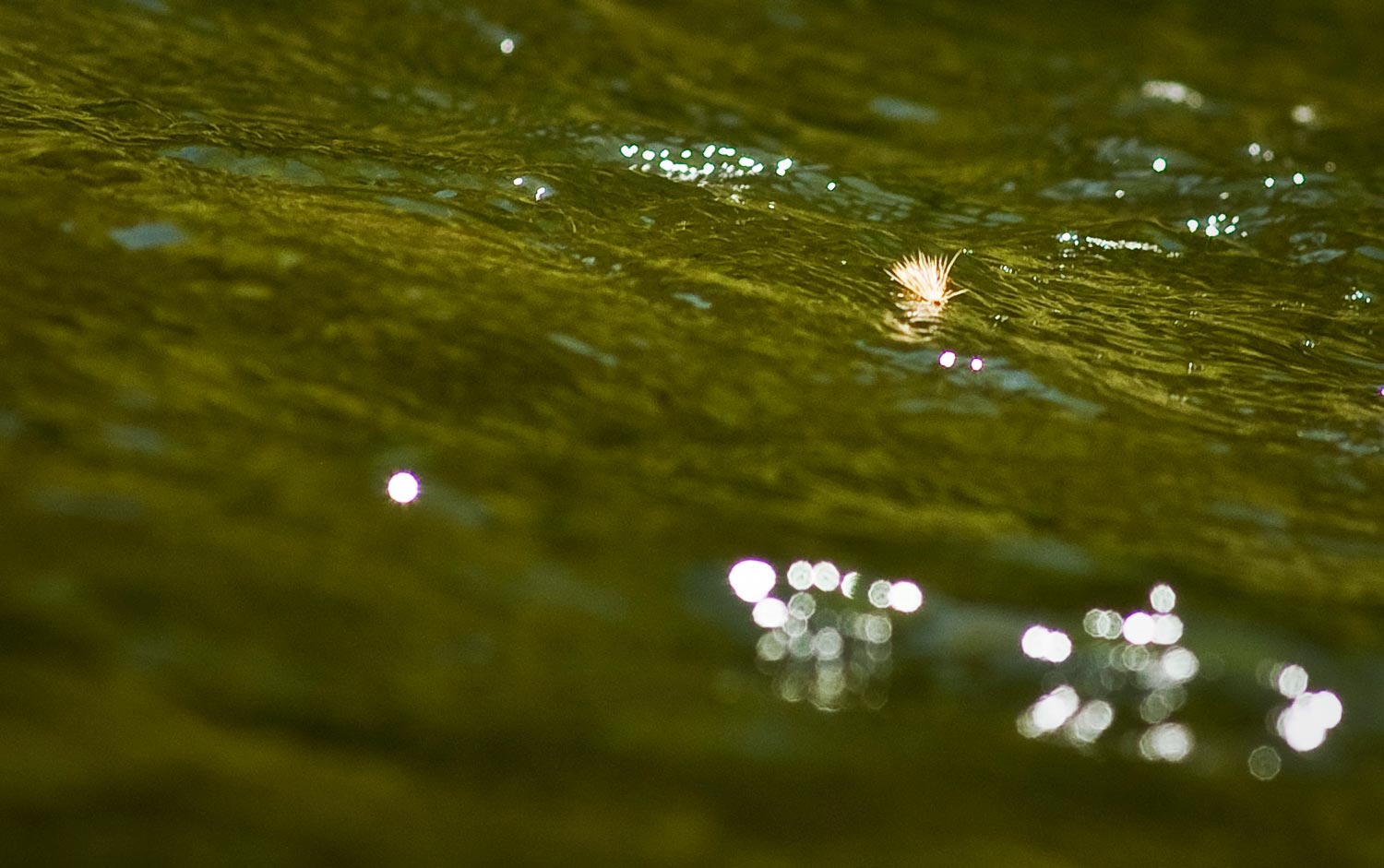
By Daniel Galhardo
DON’T RECAST YOUR FLY UNTIL IT’S HAD A CHANCE.
It takes some time to learn how to read water well. But, at least when it comes to fishing mountain streams, the concept is easy to grasp: fish are looking for food and shelter, and don’t want to spend a lot of energy looking for food. Currents bring them food, slow water and breaks in the current gives them shelter. With that in mind we quickly learn that seams where current meets calm water may be the best places to target with our flies.
Once we learn this basic piece of information, we all want our fly to land with 100% accuracy where we suppose fish will be. But, hey, sometimes it won’t!
In recent days I have been taking a lot of people fishing. Most were new to fly-fishing and to tenkara. After giving them some basic instructions on how to open the rod, how to tie the line to the rod tip and tippet to the tenkara line and then tie the fly onto it, I would teach them how to cast.
It’s been said that anyone can learn how to cast with tenkara in a matter of minutes. I have found that on average it takes 7 or 8 casts to learn how to cast with tenkara fairly well, and I’m not exaggerating. But, like anything, it takes time to get the tiny fly to land exactly where they want. If I had to guess, I’d say that in the beginning about 70% of their casts will land in the vicinity of where they wanted. Perhaps 25% will land just off the target zone. And, of course, about 5% will land on the trees in front or behind them, but that’s a different article for a different day.
The 25% slightly off-target casts is what I’m interested in making a point about. Actually, it doesn’t matter if it’s 25%, 50%, or even if you’re
Read More »The Thrill that Comes From the Unknown
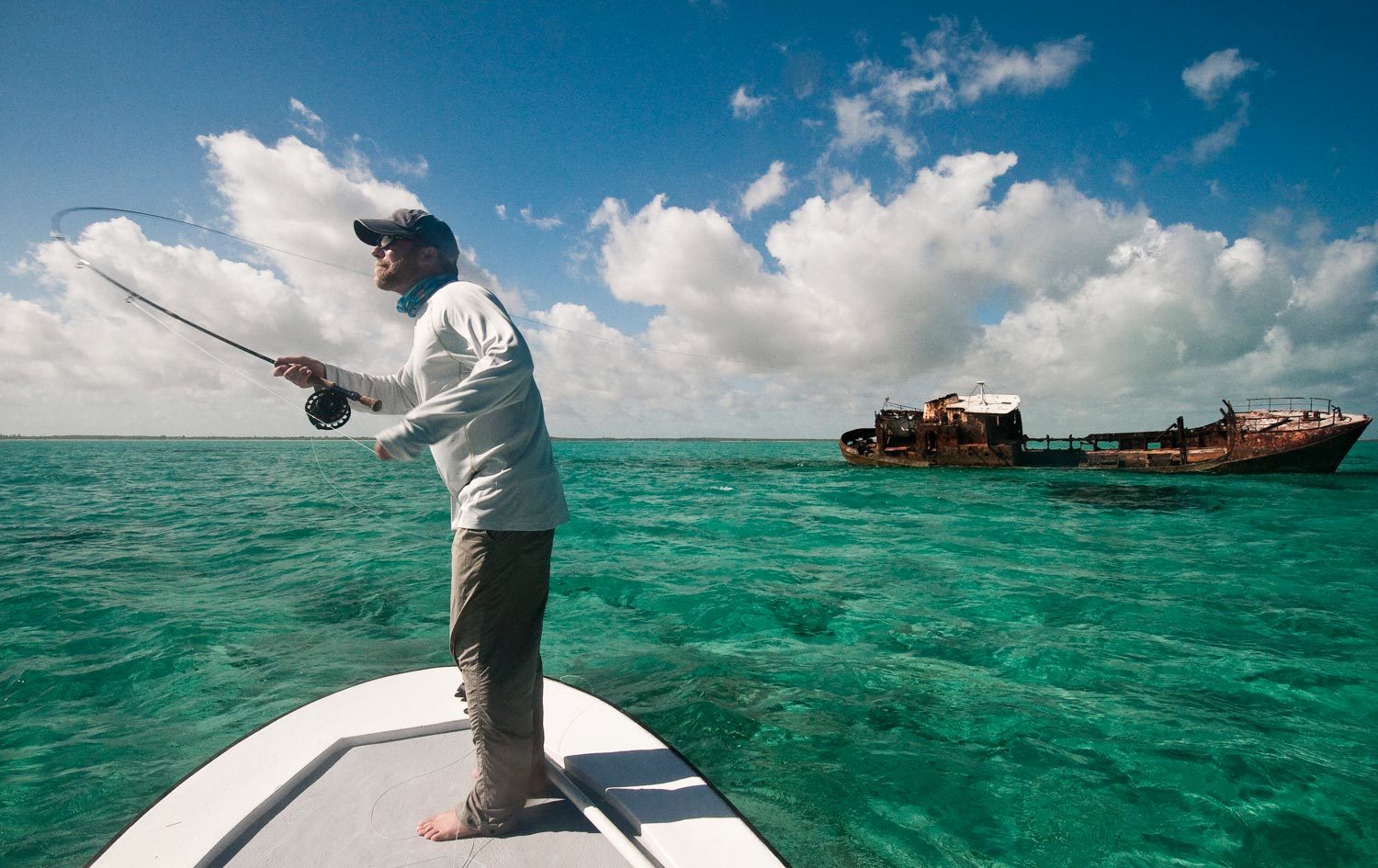
If you ask me, I think the surprise factor in fly fishing is underrated.
Most of us choose to spend our time preparing and planning out every single detail of our fly fishing trips, so we can eliminate it. We spend hours tying recommended flies, we go threw our gear with a fine tooth comb checking for imperfections, and we research everything we can about the water and species we’ll be tackling. We do this because we want to feel in control. Furthermore, we do it because we want to catch fish. Problem is, fly fishing isn’t all about trying to squeeze out every bit of success we can muster out of a day on the water. A big part of fly fishing for me is letting go and
Read More »Don’t Be Like This Guy
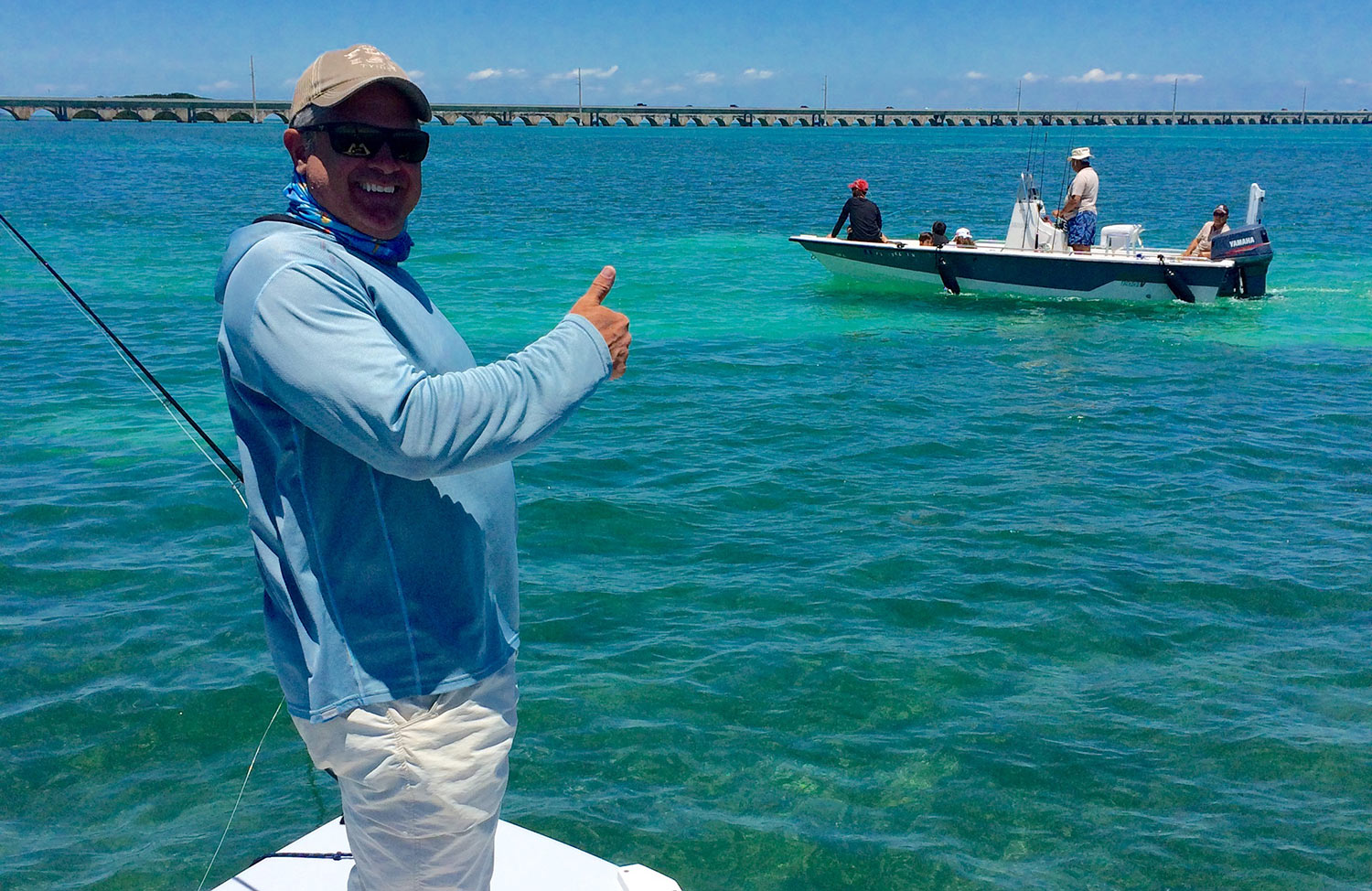
I hope this is so obvious it needs no explanation.
There we are staked up waiting for migrating tarpon when this guy rolls up, jig at the ready. I’m sure he thought we were on fish. His kids huddled down in the floor of the boat and he wouldn’t even look at us. His wife at least had the decency to say, “I’m sorry.”
On the bow my buddy Scott offers an enthusiastic thumbs up. One of the reasons I love fishing with that guy. Nothing ruffles his feathers. I’d have likely put a hook in his ear. Scott was paid back karmicly by jumping a 150 pound tarpon that afternoon. It broke him off but it was still awesome. Wish I had a photo. I was on the phone with my mother. If you’re a mother, you call at the wrong time. It’s what you do.
Anyway, a picture is
Read More »Flies That Catch Big Trout, The Truth Might Surprise You
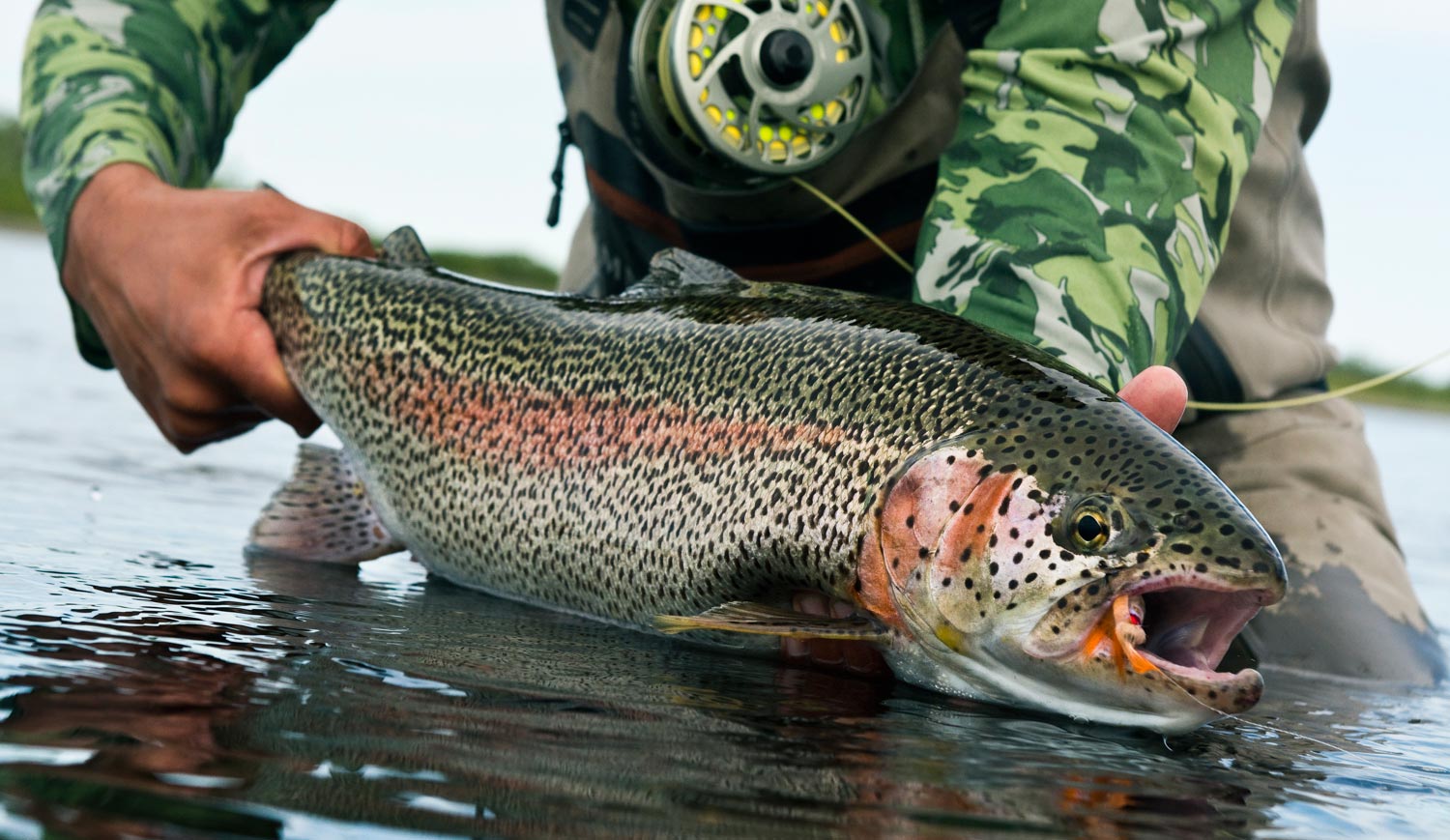
I HAVE DEFINITE IDEAS ABOUT HOW TO CATCH BIG TROUT. APPARENTLY THEY ARE ALL WRONG.
Like every other guy or gal with a fly rod, I have some pretty strong opinions about the kind of flies that catch big fish. These opinions are based on years of experience and experimentation. I have theories about the behavior of big predatory trout and they influence my tying and my fishing. These ideas are proven out by countless hours on the water. At least that’s what I thought.
Regular G&G readers will know that I am a confirmed streamer junkie. I make no apologies for it. I love fishing streamers and I believe wholeheartedly that big flies catch big fish. Here’s the problem: without knowing it, for the last eight or ten years I’ve been proving myself wrong.
I am not a fish counter. I’m not a trophy hunter. I like catching big fish but I do not possess a single mount or even a catch-and-release painting. Not surprisingly, I don’t even have a lot of photos of myself with fish. Most of the fish I catch, if they are photographed, are in someone else’s hands. The truth is that I am just fundamentally more interested in the next fish than I am the last fish.
What I do, on very rare occasions, is keep a fly. Once in a while I’ll catch a fish that’s special. It’s always a big fish but there’s usually something extra that makes it special. The color or fins, or maybe where I caught it or who I was with. It happened the other day in Alaska. I was fishing with my good buddy Bruce Chard and guide Jeff Forsee on the Kanektok river at Alaska West. On literally the last cast of the day I hooked and landed a rainbow in the ten- to twelve-pound range. A beautiful and perfect Alaska rainbow.
It was a great fish by any standard but
Read More »3 Tips For Netting Trophy Trout From a Drift Boat
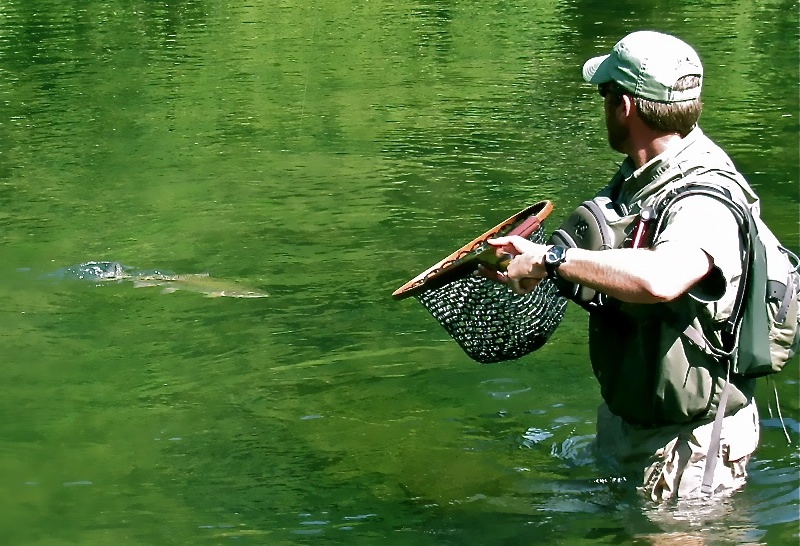
So you’re floating the river in a drift boat and your buddy just hooked into a trophy trout. What should you do next to ensure you land that trophy? Below are three tips for increasing your chances at netting that fish of a lifetime.
1. WHEN THE OPPORTUNITY PRESENTS ITSELF GET ALL YOUR FLY LINE ON THE REEL.
After you’ve set the hook, made a few strips to keep tension, and your jaw has dropped to the ground after seeing the giant beast at the end of your line, your next objective will be to find a good time to get all that excess fly line onto the reel. The last thing you want is the trophy fish making a blistering run, and your excess fly line catching on your boot, thigh brace, or rod butt resulting in a break off. When the trophy settles down and holds in a stationary position during the fight, this is when you should take the opportunity to reel in and get all of your fly line on the reel. Doing so you can let that $300 fly reel with a butter smooth drag to do its job.
2. USE YOUR DRIFT BOAT TO BLOCK DANGER ZONES DURING THE FIGHT.
Don’t keep your boat anchored up during a battle with a trophy fish expecting the angler to do all the work. Often the trophy will make a big run downstream or upstream, which will drastically lower the ability of the angler to control the fish. If you’re on the oars
Read More »Fly Fishing for Trout In Black and White, Killer Flies For High Water
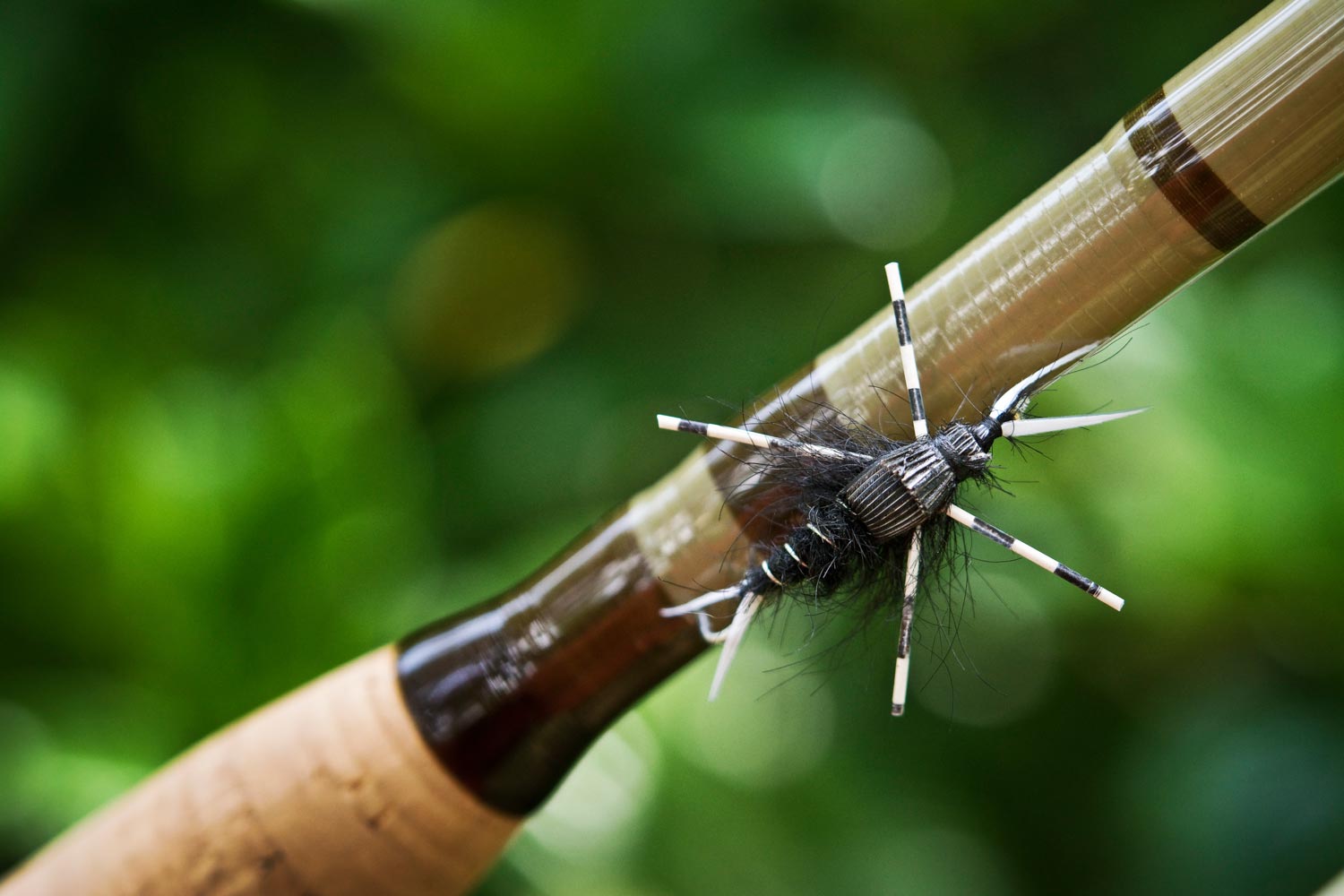
HAVE YOU EVER SPENT A RAINY AFTERNOON WATCHING TURNER CLASSIC MOVIES?
Would you have guessed that’s pretty much what trout do? Trout fishing can be pretty spectacular during high-water events. The combination of high water and the stain it brings with it give big fish the extra confidence they need to come out and feed. That’s your chance to catch fish that normally allude you. Your chances go way up if you understand how the trout’s world changes during these high-water events.
Stained water means things get pretty dark and gloomy down there where trout live. The silt in the water eats up much of the light, which is already subdued in foul weather. It’s like driving at night with a dirty windshield. What the fish see is dark and blurry.
If you read my article on how fish see, you know that fish see very well in the dark, however they lose their ability to see color. The world starts to look like those old black and white movies on TCM. Conventional wisdom is, when water is stained, fish brightly colored flies. That works to a point, but when fish lose their ability to see color altogether the logic breaks down. What does a bright pink fly look like in black and white?
When fish’s eyes are in black and white mode, they key on contrast. Contrast means clarity. Familiar silhouettes become identifiable when brought out by contrast. So why show a brightly colored fly to a fish who sees black and white? Why not
Read More »Swinging Tandem Flies For Steelhead

By Louis Cahill
Most anglers successfully fish teams of flies for trout. Why not for their anadromous cousins?
I was introduced to this idea by a good friend who is one of the fishiest guys I know. When swinging traditional flies on a floating line he always fishes a team of two flies. He tells me he catches about a third of his fish on the top fly and he’s convinced that it boosts his overall numbers by that amount.
I almost never fish for trout with less than two flies so it’s easy for me to accept the idea that I should be doing it for steelhead. The idea behind tandem flies for swinging is a little different but the logic is compelling. But does it really work?
The Theory
My buddy explained it to me this way. When you are swinging a fly and a fish swirls on it without taking it, what would you do? You’d change flies and make the same cast, showing him another. Sometimes that fish will eat the second fly. My buddy’s idea is that we get looks and swirls all the time that we never see. I find that likely. He ties his second fly the length of his step above the first, so that as he steps he automatically puts two flies over each fish. That’s kind of brilliant.
So to be clear, it’s the fly at the end of the leader which the fish sees first and fly at the top which is seen second. The team functions a little differently than a team of trout flies. A team of trout flies gives the fish a more immediate choice of patterns or depths, covering a spread of what the fish might be keying on. The steelhead version offers the fish a second chance to take the fly, with time being the variable. This makes sense. Steelhead are not feeding so the take is an aggressive strike rather than a reaction to a chosen food type.
The Setup
First let’s be clear that we are talking about fishing a floating line in traditional summer steelhead fashion. This technique would be extremely difficult to pull off in a Skagit system with sinking tips.
Like any tandem setup there are several ways you could tie on your flies. For simplicity and function, I like the setup my buddy uses. I use an intermediate polyleader and at the end I attach a short piece of 15-pound Maxima and tie a loop at the end. I then use a loop-to-loop connection to attach my 12-pound maxima tippet. The lengths of leader and tippet vary depending on the line you are fishing and that’s another article.
Rather than tying the fly to this tippet
Read More »“Do It Yourself Bonefishing” by Rod Hamilton, Reviewed
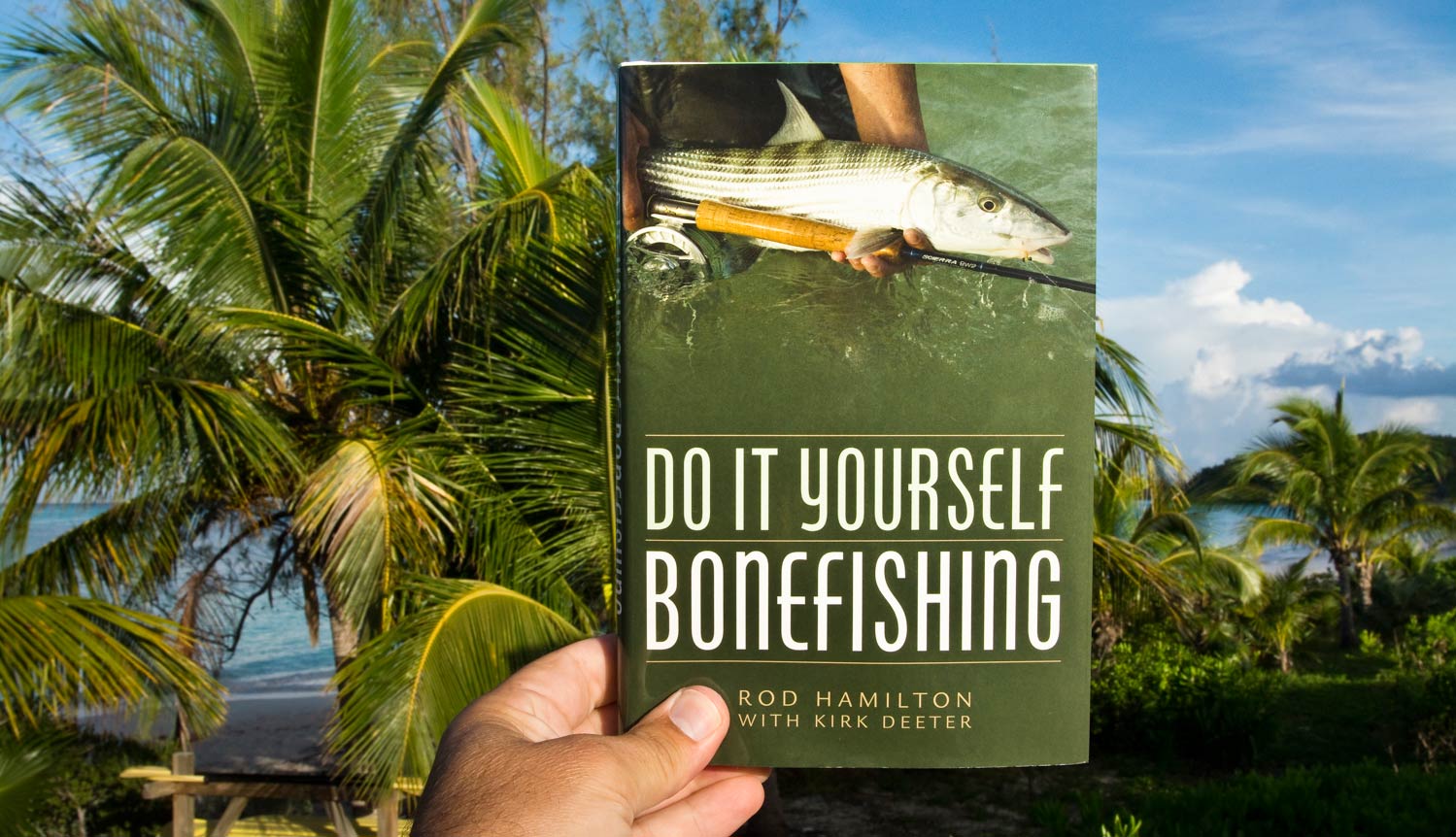
IT’S EVERY ANGLER’S DREAM TO CATCH BONEFISH ON THE FLATS BY THEMSELVES.
That may not be completely true, but if it sounds right to you, maybe you should pick up a copy of Rod Hamilton’s new book, “Do It Yourself Bonefishing.” It’s certainly a step in the right direction.
Rod, with the help of my good friend Kirk Deeter, has put together one of the most concise and easy to use volumes on the topic of flats fishing. This book covers it all and explains in clear terms how you can become a serious threat on the flats, without a guid or the expense of a lodge trip.
I’ll pause at this point to make my feelings clear. As I have said many times, if you are learning to bonefish there is no replacing the important role of a good guide who is willing to teach. There is also no better way to learn than the immersion you get from the lodge experience. That said, when you are ready to make the leap to bonefishing on your own, this book is a must.
The first half of the book covers the hows and whys of DIY bonefishing, including the equipment and skills you will need. Topics like how to spot bonefish, understanding tides and retrieving the fly are covered in great detail.
The second half of the book is a terrific resource
Read More »